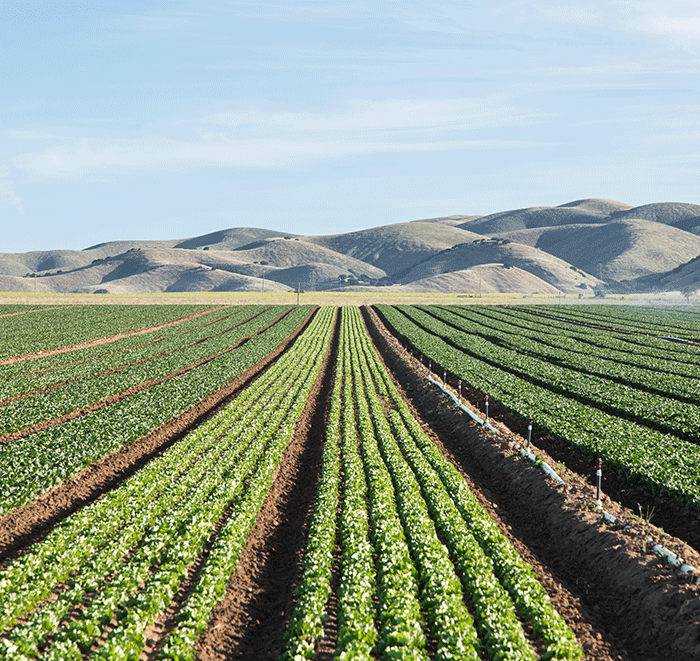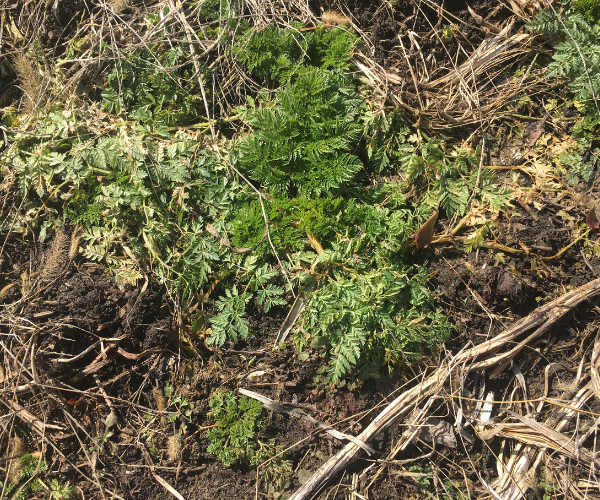Winter annual weeds have been actively growing throughout this mild winter. Mustards, Henbit, Downy Brome and Marestail are all lying in wait. Albeit slowly, they are growing and waiting for consistently warmer weather to “bolt” out of the rosette stage of life. If you intend to use a weed and feed application of fertilizer in corn this spring, the use of a 2,4-D or Dicamba product in the mix will be beneficial in providing control, especially when the weeds have bolted and are tall. Yes, the argument of the yield-robbing or competitive nature of winter annuals is always debated. Some fertilizer rates can act like a herbicide. By the time you are ready to plant, some winter annuals are already in their reproductive stage of development, and you don’t worry about it. Consider this — all plants use soil water and soil nutrition to grow. In extreme cases, winter annual pressure is high enough to cause planting issues from proper cleaning of the seeding trench to poor seed/soil contact and improper closure of the seed furrow.
2,4-D or Dicamba before planting—by label
| Crop | Use Rate | 2,4-D Preplant Interval | Use Rate | Dicamba Preplant Interval |
|---|---|---|
| Corn | 16 oz | 7 days
> 16 oz | 14 days |
4 oz | 5 days
8 oz | 7 days |
| Soybeans | 16 oz | 7 days
> 16 oz | 30 days |
Only with Dicamba-tolerant soybeans |
Pasture/Alfalfa/Burndown Herbicides
Is it too early or cold to apply?
Soon pre-emergence and burndown applications will be made, and many growers will be concerned with the effectiveness of herbicides when it is cold. Wide temperature swings in the air and soil lead to this conversation when the application was made 10 days ago when it was 70 and it has not been much above 50 degrees since then. The net result is the same, the weeds die — it may just take a little longer. As I have mentioned, winter annual weeds such as henbit, Sheperd’s purse, field pennycress, downy brome, or tansy mustard are beginning to grow rapidly. When a glyphosate product is involved, we must realize the way glyphosate controls weed. Its mode of action controls and blocks the production of three key amino acids. In a slowly growing plant, fewer amino acids are needed; therefore, symptoms appear more slowly. As long as we apply the glyphosate treatment to weeds that are growing, we will get control — slowly. Some key things to keep in mind concerning early treatments:
- avoid applying to frost-covered weeds
- include dry AMS (17 lbs/100 gal spray) with glyphosate treatments
- avoid mixing with high rates of contact herbicides
- wait until daytime temps are 40°F, or higher
- make the application when the weeds are small, in the rosette stage, and prior to vegetative bolting (stem elongation)
Even if you are planning to work your ground prior to planting, there may still be a benefit to an early burndown. For the past few years, winter annual weeds have gotten so rank prior to planting that many growers had to make a tillage pass just to get through the mess. An early burndown applied to control emerged winter annuals will result in a warmer, drier soil and a more attractive field at the time of planting.
As always, with every year’s crop, the main issue as we approach planting is soil moisture conservation. This year is a little more concerning. See below for the current drought monitor:
This is important since corn can root and absorb moisture from a 4-foot depth, but remember that newly planted corn will start absorbing moisture in 24-48 hours after planting and they absorb about 30% of their weight in water before germination begins. It doesn’t need much in the beginning, but we need uniform soil moisture at planting depth to achieve a uniform stand. So, we need to bank as much moisture as possible in the soil for later stages of growth and development. By comparison, soybeans must imbibe about 50 % of their weight in water. Since soybeans are approximately 2/3 the weight of corn kernels, the total amount of absorbed water required for germination is relatively similar.
Dr. John MacNamara // Wilbur-Ellis Agronomist



